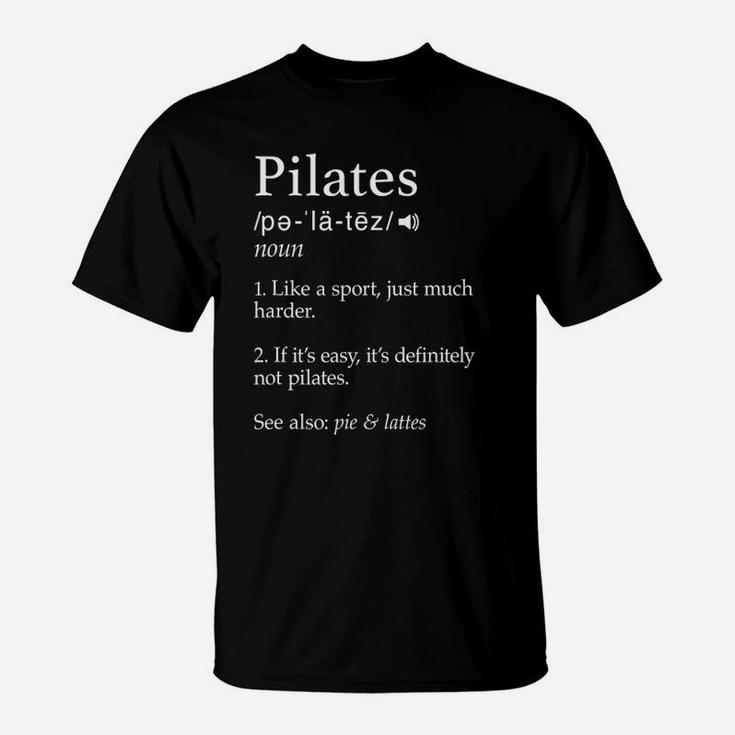
Sanskrit's word for "unite or join" is where yoga comes from. This union refers a union in mind and body. It also refers to universal consciousness as well as individual consciousness. Yogaic practice was widespread in India during the early years of the 20th century. Lord Shiva was the first to be identified as a yogi. He spread it via his writings. These books were translated into many languages and distributed to different regions around the globe.
Yoga began to gain popularity in Europe as a popular practice. The widespread distribution and use of yoga videos started in the early 1900s thanks to VHS tapes. Yoga was quickly and widely popularized in America thanks to the growing fitness industry and the Internet. In the 1990s, the invention of the microphone and the transatlantic flight made it possible to reach large audiences and spread ideas widely.
Yoga's history dates back thousands years. Although yoga was originally practiced for spiritual reasons, Westerners only discovered it in the middle of the 19th century. Swami Vishwananda, an Indian monk and teacher, traveled across Europe and the United States to share the practice. He eventually taught yoga to the West, where it has been popularized in modern times. This is a great place to learn about yoga's historical roots.

The roots of yoga date back to ancient India. The Vedas (the oldest of the four Vedas) contain references to the practice. The Rig Veda contains over one thousand hymns and 200 mantras. To learn about yoga, priests from the Vedic age used Rig Veda. Later centuries saw many Rishis refine the practice and bring it into the 21st century. Another great resource for information on the history of yoga is the Upanishads.
The first mentions of yoga were in ancient India. This is the beginning of the history of yoga. The practice developed to include physical postures, or asanas. Hatha yoga became popular in the U.S. in the 1900s. Many teachers added asanas into their classes. It gained widespread acceptance in the 1970s, when it was popularized. The popularity of yoga grew and spread after its birth in the United States.
The history of yoga is complex. Its roots go back to 2000 BC, when yoga was primarily about the mind. The first Hatha yoga classes were then developed. In the 1920s, the practice evolved into a more body-centered form of yoga, called hatha yoga. Today, asanas are commonly used as a tool to achieve this goal.
Yoga has its roots in ancient India. The practice of yoga thousands of years ago was very different to the Vinyasa classes we have today. It is possible to learn more about the history of yoga and better understand it. One example is that ancient yoga wasn't practiced in the exact same way as modern-day Yoga. Yoga's origins can be traced back thousands years ago and will help you to appreciate the practice more deeply.

A rich tradition of yogic practices can also be found in the history of yoga. Although the ancient yogis were mostly Hindu, they were heavily influenced by Hindu culture. Yoga was generally banned in the west because of its British origins. Only after that, yoga was allowed to spread across Europe and the United States. During the late 1800s, gurus from India brought yoga to the United States. Asana is a form of meditation.
Asana forms the basis of many yoga practices. Asana practice is ancient. Yoga was considered a spiritual practice and religious practice in the 5thcentury. The ancients also included Buddhism and Jainism. The Classical Period was the time when yoga beliefs and practices were first presented in a systematic manner. Yoga's influence and popularity grew for many centuries. However, as with all new practices, its roots are still rooted within the same ideals and principles.
FAQ
What food should I avoid if I want to lose weight
Avoid trans fats. Trans fats can increase LDL (the negative) cholesterol levels and decrease HDL (the positive) cholesterol.
Trans fats can be found in fast food, deep-fried foods, packaged baked goods, snack cake, and other processed foods.
These unhealthy fats also cause inflammation, leading to heart disease and diabetes.
Avoid eating foods that contain artificial sweeteners. Artificial sweeteners can increase your risk of developing cancer.
These chemicals are found in many products, including soft drinks, candy bars, chewing gum, as well as candy bars. These chemicals are also found in meat, poultry, eggs, and other foods.
Artificial sweeteners include saccharin and sorbitol.
The American Heart Association advises against using these chemicals, as they could damage DNA.
Do I have the obligation to exercise every day or just on occasion?
No! At least 30 minutes moderate-intensity exercise five days per week is a good goal. That could mean walking fast enough for you to get slightly out of breath and biking hard enough for you to sweat.
Are There Any Benefits Of Doing Yoga?
Yoga has been popular since ancient times. Celebrities and ordinary people love yoga.
Yoga is great for strengthening and stretching your muscles. Yoga is also great for calmening your mind and relaxing.
Yoga and other forms exercise differ in that yoga is focused on breathing techniques.
You can practice various poses to improve your flexibility and balance.
How to Build Muscles Fast
It is important to eat healthy food and lift weights frequently in order to quickly build muscle.
The best time to work out is early morning when you are fresh and ready for action!
Try exercises like squats and bench presses.
Consider trying different weight training programs and drinking plenty of water throughout each day.
Which is the best order to exercise?
It all depends on what you're looking for. If you want to build muscle mass, then do heavy weights first. Next, you can move onto cardio. If you are looking to lose weight, then move on to strength training.
You can burn fat by just doing cardio. Add strength training to your workouts.
Do cardio first if you are looking to increase muscle mass. It stimulates growth hormones that help build muscle mass.
You should also eat before your workout. This will fuel you muscles better, which will make it work harder. Plus, it makes you feel better during your workout.
What is the best workout routine to build muscle?
Two main types of exercises are required for building muscle mass. These are compound movements and isolation exercises. Isolation exercises target specific muscles while compound moves focus on multiple groups at once.
Your best option to improve your fitness is to work out with exercises that challenge all your major muscle group. This ensures that each session is challenging.
MyFitnessPal can help you keep track of your activity. It lets you log everything from calories burned and weight lifting. It also allows you to create meal plans customized for your goals.
Is weightlifting more effective at burning fat?
Weight lifting will help you burn more fat, but it's best to combine it and cardio.
To maximize the benefits of weightlifting, you need to perform it after cardio workouts.
If done correctly weightlifting can raise your heart rate, oxygen consumption and help you lose weight.
It is important to combine cardio with it, as you will not see significant changes in your body's composition.
Statistics
- Are You One of the 20% of Guys (mh.co.za)
- According to the American Academy of Dermatology (AAD), men over 50 are at a heightened risk of developing it. (healthline.com)
- 10 pounds in a month is likely during a lean bulking phase, especially for beginners. (muscleandstrength.com)
- According to the American Heart Association, blood pressure should be checked at least once every two years, beginning at age 20. (my.clevelandclinic.org)
- Cardmembers earn 5% Back at Amazon.com with a Prime Credit Card. (amazon.com)
External Links
How To
What nutrients is a man supposed to consume daily?
Men require daily nutrition for healthy growth and development. Your body needs vitamins, minerals and nutrients as well as carbohydrates, proteins, fats, carbohydrate, fiber, and other essential components.
Also, the male body requires certain nutrients at specific times during the day. To give you an example, the body uses energy it receives from food to make hormones and antibodies. Protein is needed to build muscles and repair tissue damaged when you wake up.
Your body will burn fat at night and store the extra energy as a form of glycogen. During this time, your body needs fewer calories but still needs sufficient nutrients. You may have an occasional snack during the evening hours if you feel hungry.
To fuel your muscles while you train, you will need sufficient carbs as well as protein. If you train hard, you may experience muscle soreness after exercising.
To avoid this, you need to eat carbs and proteins within two hours of training. Your body will break down stored glycogen to provide glucose for energy.
After your workouts, you should eat protein immediately. This will prevent muscle tissue from being damaged while you sleep.
During periods of intense physical activity, your body produces lactic acid. Lactic acid builds up in the bloodstream and causes fatigue. This can be avoided by eating foods high in carbohydrates like fruits and vegetables.
Carbohydrates provide energy for your body to recover after strenuous exercise.
Additionally, lean meats, fish and eggs, dairy products, yogurt, cream, cheese, yogurt and beans can be added to your diet.
All of these foods contain high quality protein. Protein aids in muscle growth and repair of damaged tissues. Protein is also necessary for the production of sex hormones such as testosterone.
To maintain healthy skin, hair, and joints, you also need sufficient dietary fats. Healthy men require between 20% and 35% of total caloric intake from fat.
Fat protects your heart from cancer and keeps it strong. It also keeps your brain functioning properly.
Most of the fat you need can be obtained from vegetable oils, including sunflower oil (or soybean oil), peanut oil, peanut oil, soybean oil, and peanut oil.
These oils contain high levels of monounsaturated fat acids (MUFAs). MUFAs reduce cholesterol and inflammation. They protect your cells and prevent damage from free radicals.
Saturated fats (SFAs) are found mostly in animal products like meat, dairy products, and butter. SFAs can increase LDL ("bad") cholesterol as well as triglycerides. They promote weight gain and abdominal fat.
Polyunsaturated oils (PUFAs), are found in plant-based foods like nuts, seeds and vegetable oils. PUFAs improve cardiovascular function and decrease inflammation. They help to control blood sugars and cholesterol.
Erectile dysfunction can often be a problem for men who have low HDL ("good") levels of cholesterol. Saturated fats are a major source of bad cholesterol. This lowers good cholesterol.
Men who eat a lot of red meat or pork develop prostate problems because they contain large amounts of nitrates. When heated, nitrates are converted to nitrosamines. These compounds can cause cancer.
Nitrites and other harmful chemicals are common in processed meats. Avoid them.
The American Heart Association recommends eating no more than 2 servings of red meat per week. Choose poultry, fish and legumes instead.